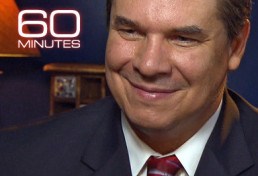Karen Ansara
 (Editor’s Note: Much has already been written on the Greg Morenson saga, but little on what the reaction is from those who donated to his Institute. In this post, Karen Ansara – a Boston-based philanthropist, a passionate advocate of international giving, a moving spirit being the New England International Donors (NEID), and a donor to Mortenson – reflects on her own encounters with Greg Mortenson and her reflections on the recent controversy).
(Editor’s Note: Much has already been written on the Greg Morenson saga, but little on what the reaction is from those who donated to his Institute. In this post, Karen Ansara – a Boston-based philanthropist, a passionate advocate of international giving, a moving spirit being the New England International Donors (NEID), and a donor to Mortenson – reflects on her own encounters with Greg Mortenson and her reflections on the recent controversy).
Alpinists are risk takers. So are founders.
Some alpinists – like some founders – take extreme risks and “go it alone.” Others know that a trusted partner or team enhance your chance of success and survival. A good partner on your rope, like a strong board member, provides not only support but essential checks and balances. The partner may be the one to tell you it is time to retreat from the climb.
My husband, Jim, who spent many years mountain climbing, first met Greg Mortenson in the late 1990’s through the American Alpine Club, of which Jim was a board member and then Vice President. That was before Three Cups of Tea was written. That was before Greg became world-famous. Jim was impressed with the selflessness of Greg’s work as founder of the Central Asia Institute (CAI). “We really should pay attention. We should support his work,” Jim said, and for some time Greg’s postcard of dusty girl students in colorful headscarves hung on Jim’s bulletin board.
Many years passed and Jim stayed involved and knowledgeable about Greg’s work in Pakistan through the American Alpine Club, which helped fund his work. Then in January, 2007 we were invited by close friends from the climbing world to hear Greg speak at the Harvard Traveler’s Club about his hot-off-the-press book. I rode to the dinner with Greg, all-the-while asking him questions: “How do you determine where to build schools? Who maintains them? How do you find qualified teachers?” I was so taken by the magnanimous heart and humble demeanor of this great risk-taker, who owned one rumpled sport coat and wore no socks to the Harvard Club dinner.
A few months later we made a modest grant, after doing some routine due diligence. My antennae were up because Three Cups of Tea openly describes Greg as an impassioned leader who eschews convention, other people’s timetables, and administration. Central Asia Institute’s 990 (tax return) that year showed no salary for Greg, nor any travel expenses for his book tour. It was understandable that Greg, who always put himself last, would sacrifice a salary and would be living solely off book royalties. The 990 only showed a three-person board. That was concerning, but based on faith, we made the grant. We never received a report, other than a broadcast email — not even another solicitation.
Later that year I contacted Greg through his Head of Operations, Jennifer Snipes, to request he speak at my childrens’ elementary and middle school — one devoted to teaching children with language-based
learning disabilities. By then, Three Cups of Tea was a sensation, and Greg needed to be skillfully booked between radio interviews and college forums. He charged us no fee. He sent many books and magazine reprints to the school for free. Scores of faculty and students read portions of Three Cups of Tea in preparation, resonating with the mission of opening the future to students who would otherwise never learn to read. Through a basketball shoot-out and other events, the school community raised $10,000 for Central Asia Institute.
When Greg spoke, he was humble, warm, and inspiring. He took off his shoes — a Pakistani sign of respect. He made each student feel utterly important. He was my children’s first exposure to the power of philanthropy, to giving back, to giving your all for the well-being of others. They had their picture taken with Greg and his gigantic cardboard check.
That afternoon, once again, I had the opportunity to ride in the backseat of Greg’s car — this time a town car with a driver supplied by his publisher. I asked, “How do you manage this huge operation, when you spend so much time speaking, and half the year in Pakistan? How can you keep it all straight? What do you need?” Greg said he felt there was a certain arbitrariness about the assessments of monitoring groups like GuideStar and Charity Navigator, which require different types of documentation and don’t really assess an organization’s true stability or impact. He said he had recently “let go” of several board members, who kept pushing systems he felt were onerous and detracted from the important work. He now had a board of three, plus one-and-a-half U.S. staff persons. These answers gave me a lot to think about… enough to not make another grant, while still wishing Greg the best, because his heart filled a room and he engendered the trust of a country we often see as our enemy.
The recent 60 Minutes expose on Central Asia Institute raised for me more questions than it answered: “Why did they not interview David Oliver Relin, who crafted Greg’s story into a best-seller? Why take at face value the words of purported Taliban members, who, of course, would claim they did not kidnap Greg in the Wakhan Corridor? Why provide as main source of financial analysis the American Institute for Philanthropy, an entity I have never heard of, rather than the well-known GuideStar or Charity Navigator?” (The latter gave CAI a rating of five stars.)
While we all pose questions and await more answers, Jim and I believe Greg intended to do no harm. He is a very good man trying to do some extraordinarily difficult and critical work, but may not have had the right partners to guide him on such a difficult climb.
NGO founders — like alpinists – face more risks when they go it alone. A good climbing partner can save your life and much, much more.
(P.S. Read Greg’s response to the CBS 60 Minutes Report, the CAI’s Board’s response, Greg’s blog post written in 1999 recounting his exhausting 1993 descent from his climb of K2, along with climbing partner Scott Darsney, an article in the Chronicle of Philanthropy on this issue, and Charity Navigator’s assessment).























































I would wait and see. The man could have mis-managed but for some reason i believe he is not corrupt. Good luck to Mortensen and all those kids.
After reading the books, I contacted CAI and offered to fund construction of a school in full, but required my funding go to a specific project, with a specific budget, and that photos and receipts be provided. I was turned down with a cheerful, “We don’t do that.” Now I know why. While they have almost certainly accomplished some wonderful things, they have almost certainly accomplished much less than claimed, and if you will read their financial statements on Charity Navigator, you will see that less than 4 million out of a 13 million budget went to building and supporting schools. Charity Navigator does not audit financial statements, it only reports what the charity tells it. It gave CAI 4 stars based on what CAI told it. It said 80% went to “program” because “program” is allowed to include advertising for Greg’s books (sales of which do not benefit CAI), and all the travel and promotion for his $30K speaking engagements (proceeds of which do not benefit CAI).
Greg may well have a good heart. I believe he does, but somehow he got caught up in a web of well intentioned lies and exaggerations. Much money has not been used in ways donors intended.
I would want to see what happens next. I hope he survives to satisfy his critiques. Last year was the first such year that I had put a meager amount into his charity, I would want to do the same this year too. I would say,go with what your heart says, people !
I think we should not be too harsh on Greg Mortenson. He tried his best and he is sincere. He may be a bad manager and may have lost his way sometimes. But this is not a bad person. In fact, he is a very good person trying to do good.
@Susan Hale Whitmore
If he is actually sick, I am sorry for him and will pray for him. But that is no excuse for having mis-spent people’s donations in personal greed, or even waste. Those are two separate things.